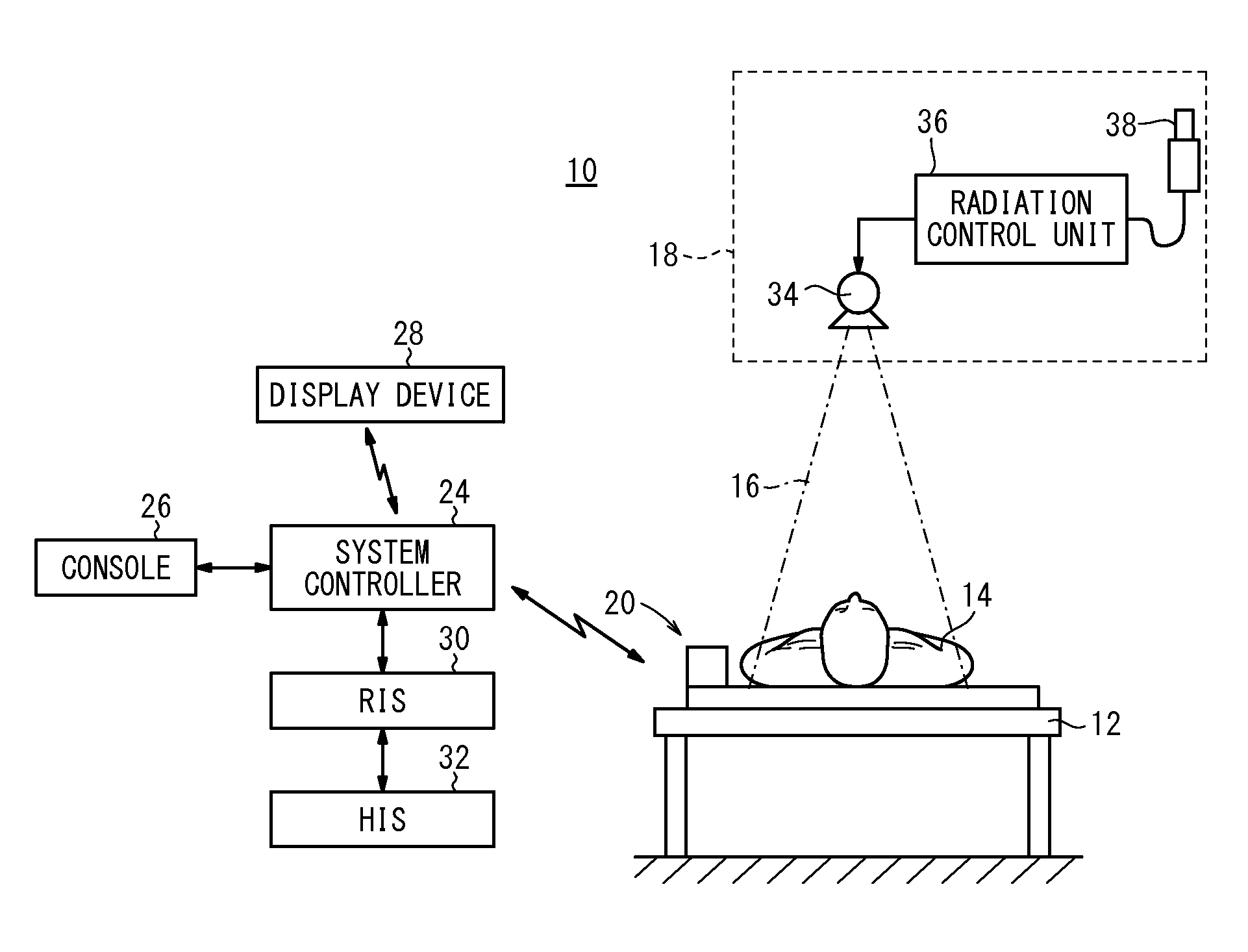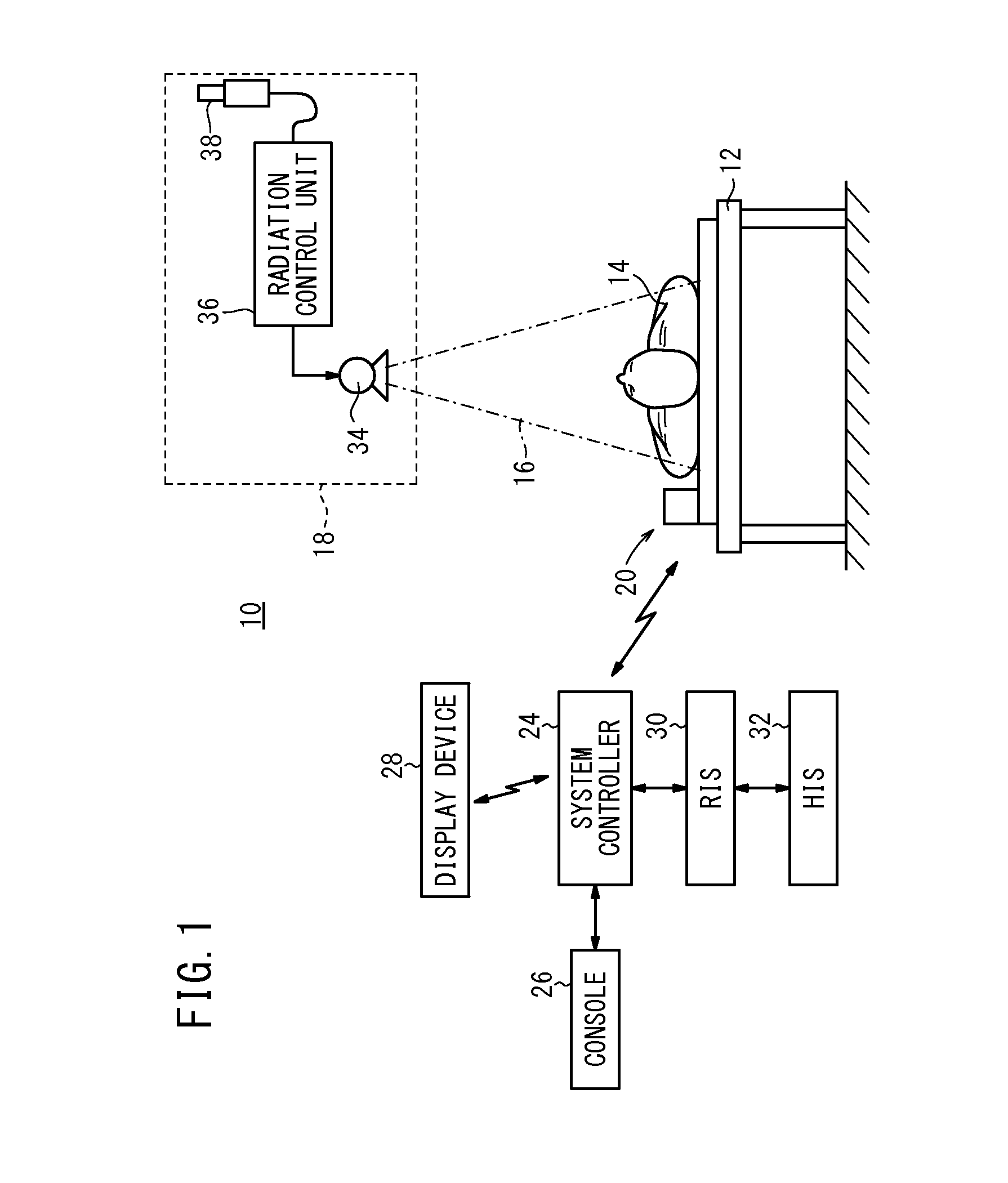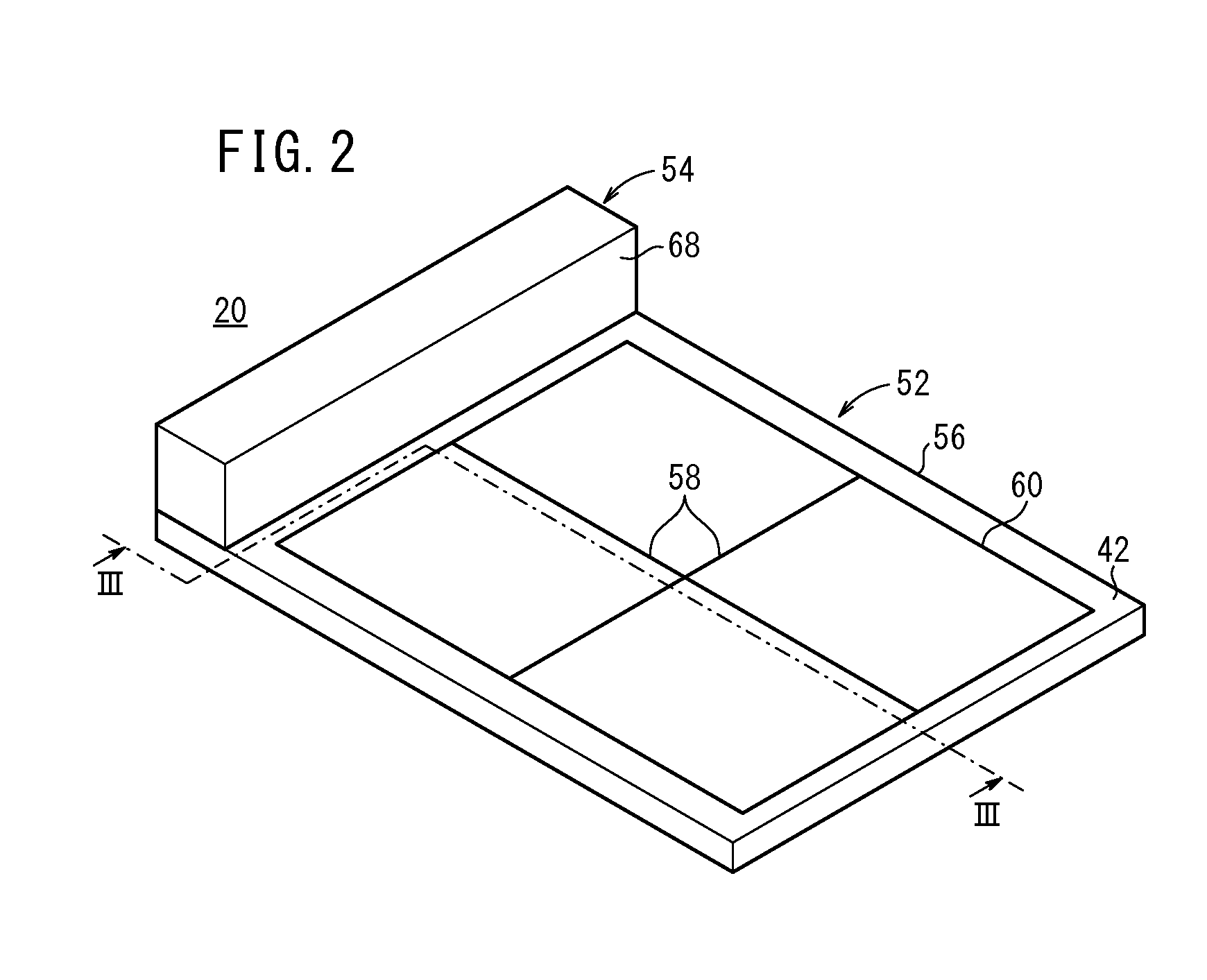Radiological image-capturing device, radiological image-capturing system, radiological image-capturing method, and program
a radiological image and camera technology, applied in the field of radiological image capture systems radiographic image capture methods, etc., can solve the problems of inability to electrically connect in view of safety, inability to synchronize image capture timings, and high installation and maintenance costs, and achieve the effect of appropriate captur
- Summary
- Abstract
- Description
- Claims
- Application Information
AI Technical Summary
Benefits of technology
Problems solved by technology
Method used
Image
Examples
modified example 1
[0313]In the above embodiment, even when the emission of the radiation 16 is judged to be started in the scan mode, the electronic cassette 20 is not switched into the exposure state until the one cycle is completed. The electronic cassette 20 may be switched into the exposure state immediately after the judgment of the emission of the radiation 16.
[0314]FIGS. 16 and 17 are diagrams for illustrating the electric charges in the pixels 102 in some rows in a case where the electronic cassette 20 is switched into the accumulation state after the radiation 16 is detected and then the one cycle of the scan mode is completed. In the scan mode, each of the gate drive circuits 150 reads the electric charges stored in the pixels 102 in the 0th to final rows sequentially row by row. In this case, for example, even if a digital value obtained by reading the electric charges stored in the pixels 102 in the 0th row is judged to be larger than the threshold value and thus the radiation 16 is detec...
modified example 2
[0325]In the above embodiment and Modified Example 1, the user operates the input unit 200 to input the number of images to be captured, and the image number setting part 224 in the system controller 24 sets the number of images to be captured and sends the number of images to the electronic cassette 20. The numbers of images may be recorded on the table 218 in association with the imaging areas and the diagnosis purposes. In this case, the image capturing condition setting part 222 reads from the table 218 the number of images corresponding to the imaging area and the diagnosis purpose selected by the user, sets the number of images, and sends the setup number of images to the electronic cassette 20.
modified example 3
[0326]In the above embodiment and Modified Examples 1 and 2, in a case where the radiographic image capturing process is performed multiple times, the user operates the radiation switch 38 to emit the radiation 16 from the radiation source 34 multiple times. In this case, the radiation 16 may be continuously emitted from the radiation source 34 over a predetermined time, and the electronic cassette 20 may act to perform the radiographic image capturing process multiple times in the predetermined time. The user can operate the input device of the radiation control unit 36 to set the predetermined time. The radiation control unit 36 controls the radiation source 34 to emit the radiation 16 for the setup predetermined time.
[0327]FIG. 19 is a time chart of the operation of the electronic cassette 20 in Modified Example 3. In the electronic cassette 20, the first readout control part 130 repeatedly executes the scan mode until the emission of the radiation 16. When the emission of the ra...
PUM
 Login to View More
Login to View More Abstract
Description
Claims
Application Information
 Login to View More
Login to View More - R&D
- Intellectual Property
- Life Sciences
- Materials
- Tech Scout
- Unparalleled Data Quality
- Higher Quality Content
- 60% Fewer Hallucinations
Browse by: Latest US Patents, China's latest patents, Technical Efficacy Thesaurus, Application Domain, Technology Topic, Popular Technical Reports.
© 2025 PatSnap. All rights reserved.Legal|Privacy policy|Modern Slavery Act Transparency Statement|Sitemap|About US| Contact US: help@patsnap.com



